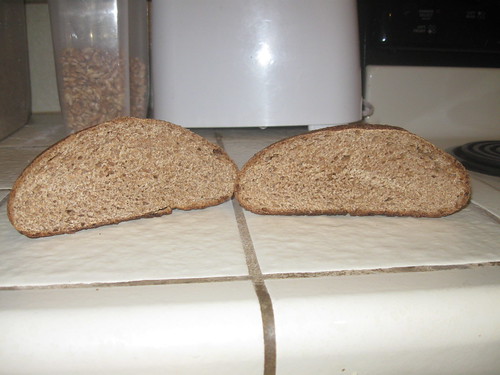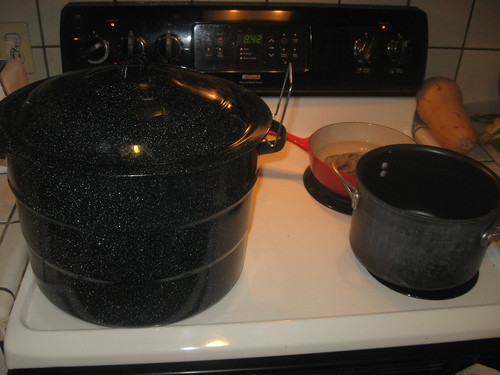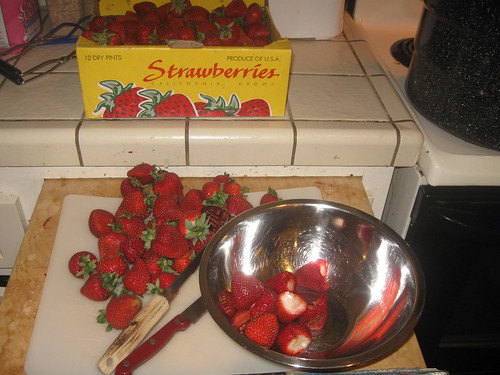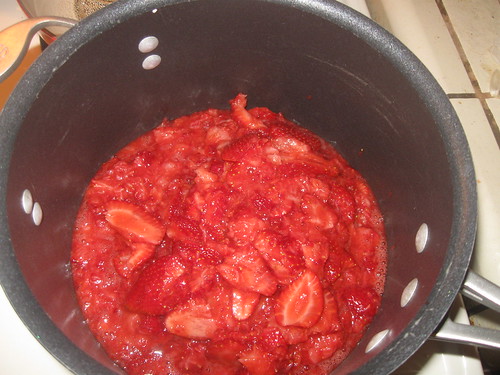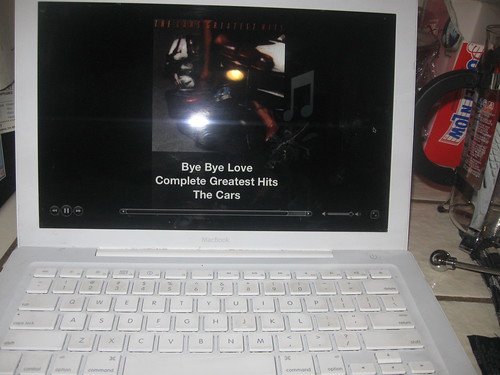Count Broccula's veg-head ramblings
My home experiments with vegetarian cooking. Focused on seasonal produce with some vegan stuff thrown in for good measure. I may include random other food-related stuff as I please.
Wednesday, July 14, 2010
Pizza! From (really really) scratch.
Well, I was on a sourdough roll (pun intended). I decided I'd try a pizza that came from a sourdough starter. Apparently, the dough doesn't really get its rising power from the starter, but it gets the flavor from it. Well... good, because it didn't rise much. I rolled it out thinly on parchment paper and threw it onto the pizza stone in a hot oven. I baked it for about ten minutes, then pulled it out and let it sit for a while. I topped it with my favorite pizza toppings (for the record, sauteed oyster and shiitake mushrooms with garden-grown onions, black olives, veggie sausage and mozzarella), then threw it back in for another ten minutes or so.
Tomato-stravaganza
I took a tomato canning class on Saturday. We made two things and watched the instructor make a third. First, we canned tomatoes just plain with no seasoning. No salt, even. We simply peeled and quartered the tomatoes, chopped a few and cooked them down to make a sauce, and then packed the jars. It wasn't anything I hadn't read about in the Ball Blue Book, but it did give me a certain level of comfort with the process, so that alone was probably worth the time and money.
Monday, July 12, 2010
Adventures in sourdough
Well, I decided I wanted to try bread-baking. I have made loaves here and there, but I don't make very many yeasted breads because of the time involved. If you know me, you know that although I love to cook, I don't want to rope myself to the kitchen all day. Still, bread seemed like a challenge I wanted to undertake.
Monday, July 05, 2010
Strawberry jam
I have recently decided to try canning, and wanted to start with something fairly simple that I would eat the dickens out of. I LOVE strawberry jam, so it was an easy pick. I started by buying a half flat of strawberries at the farmers market. I probably only really needed about three pints, but I was also making ice cream, and we eat a lot of them as well.


